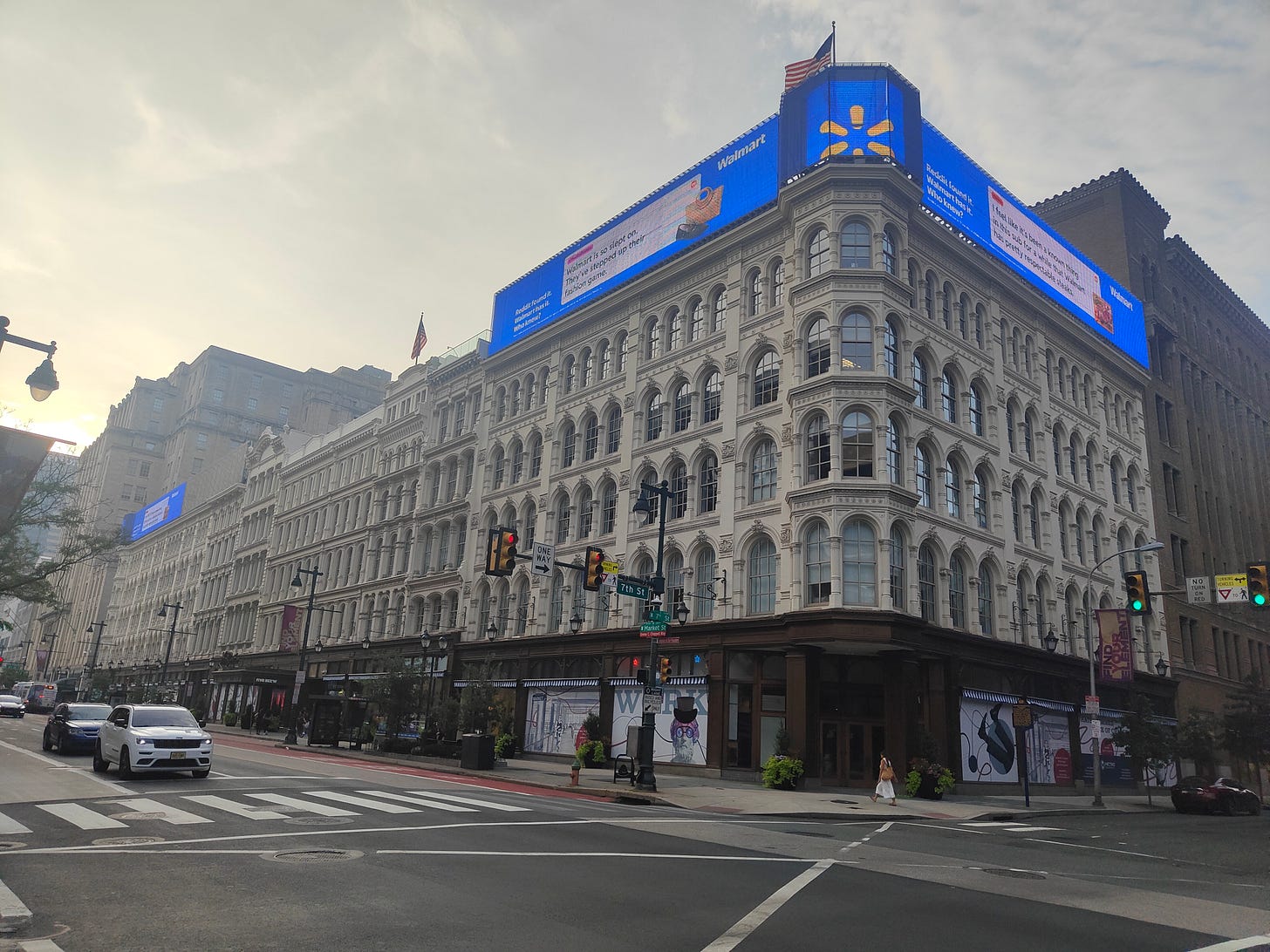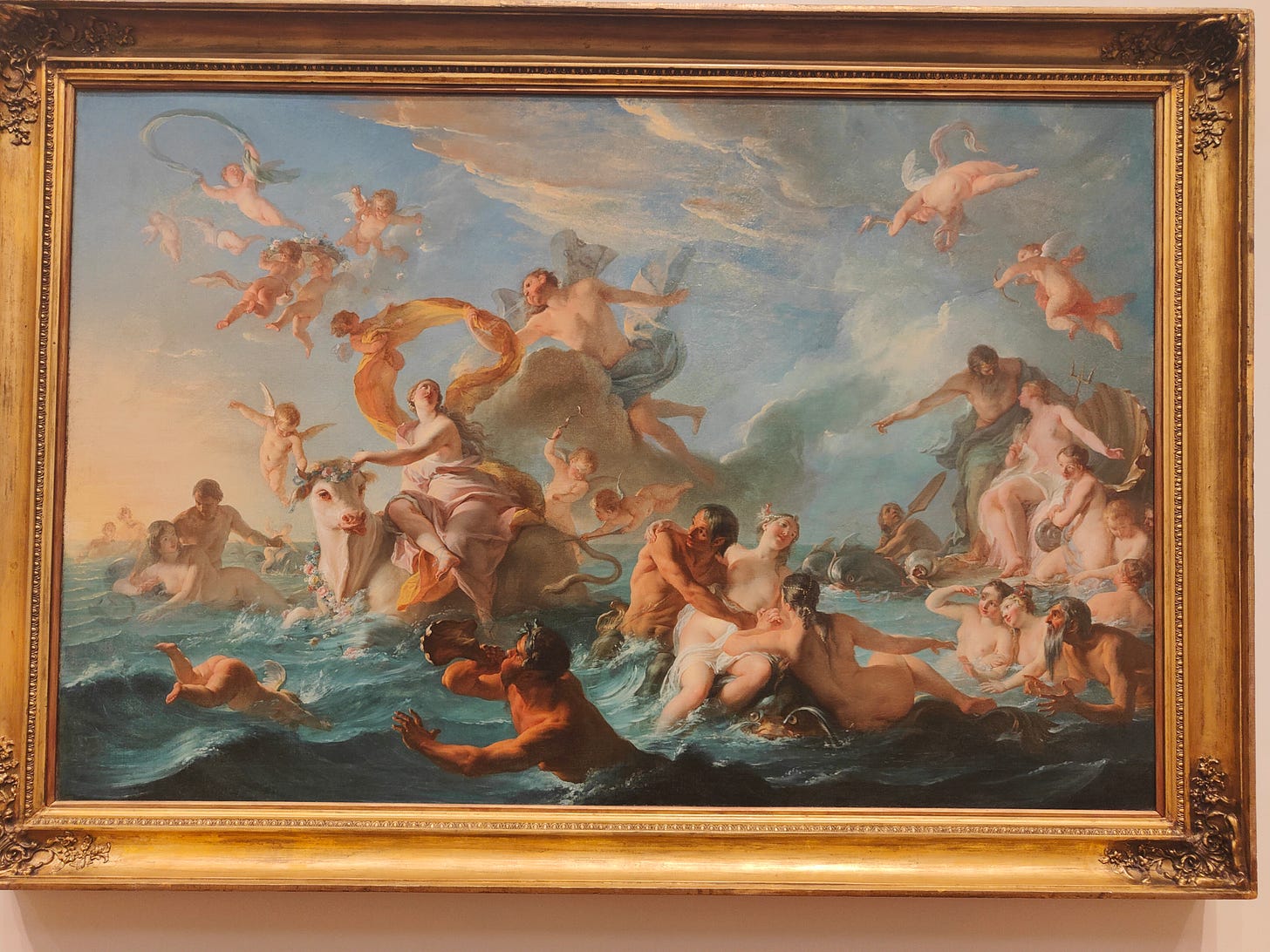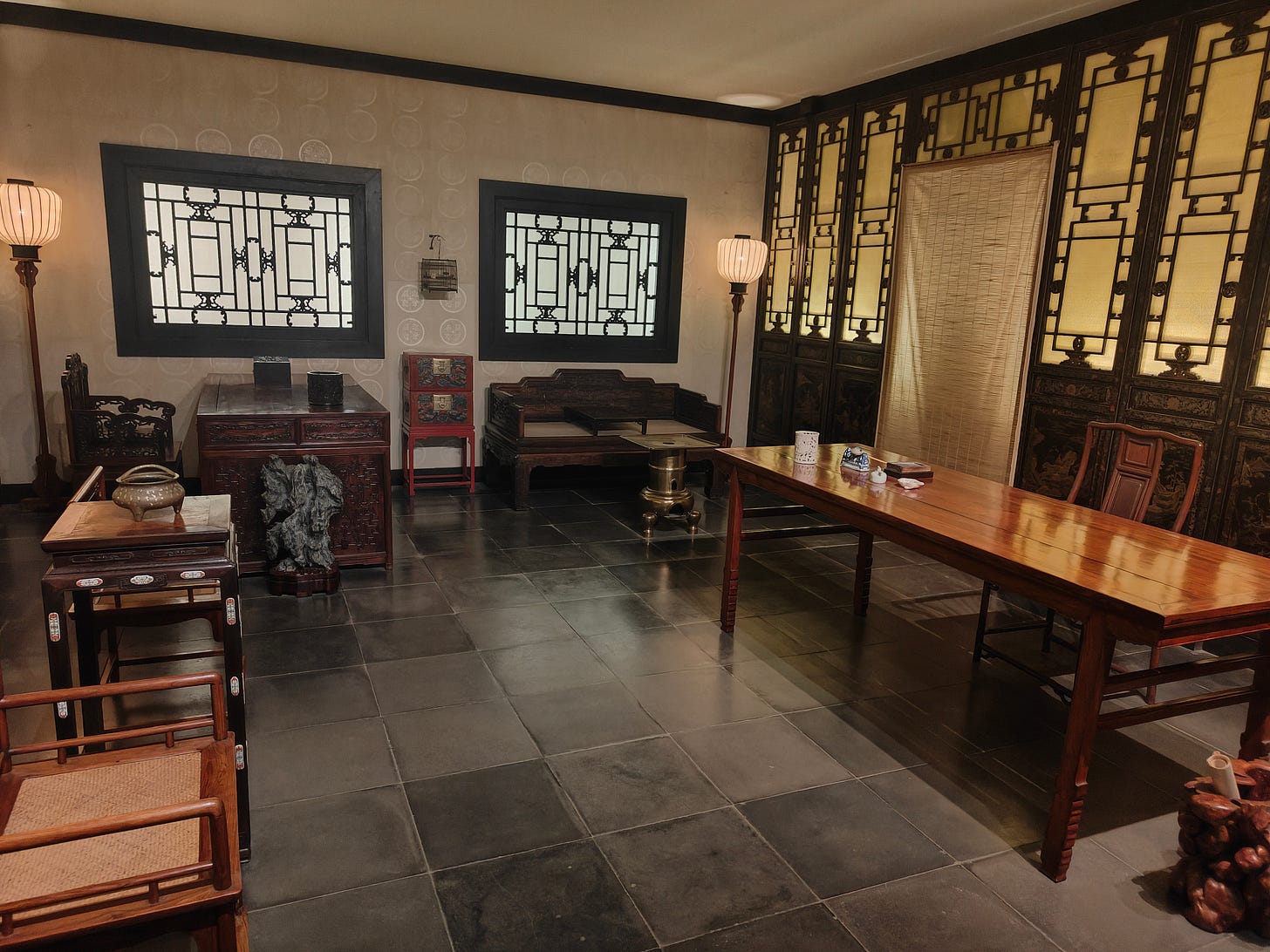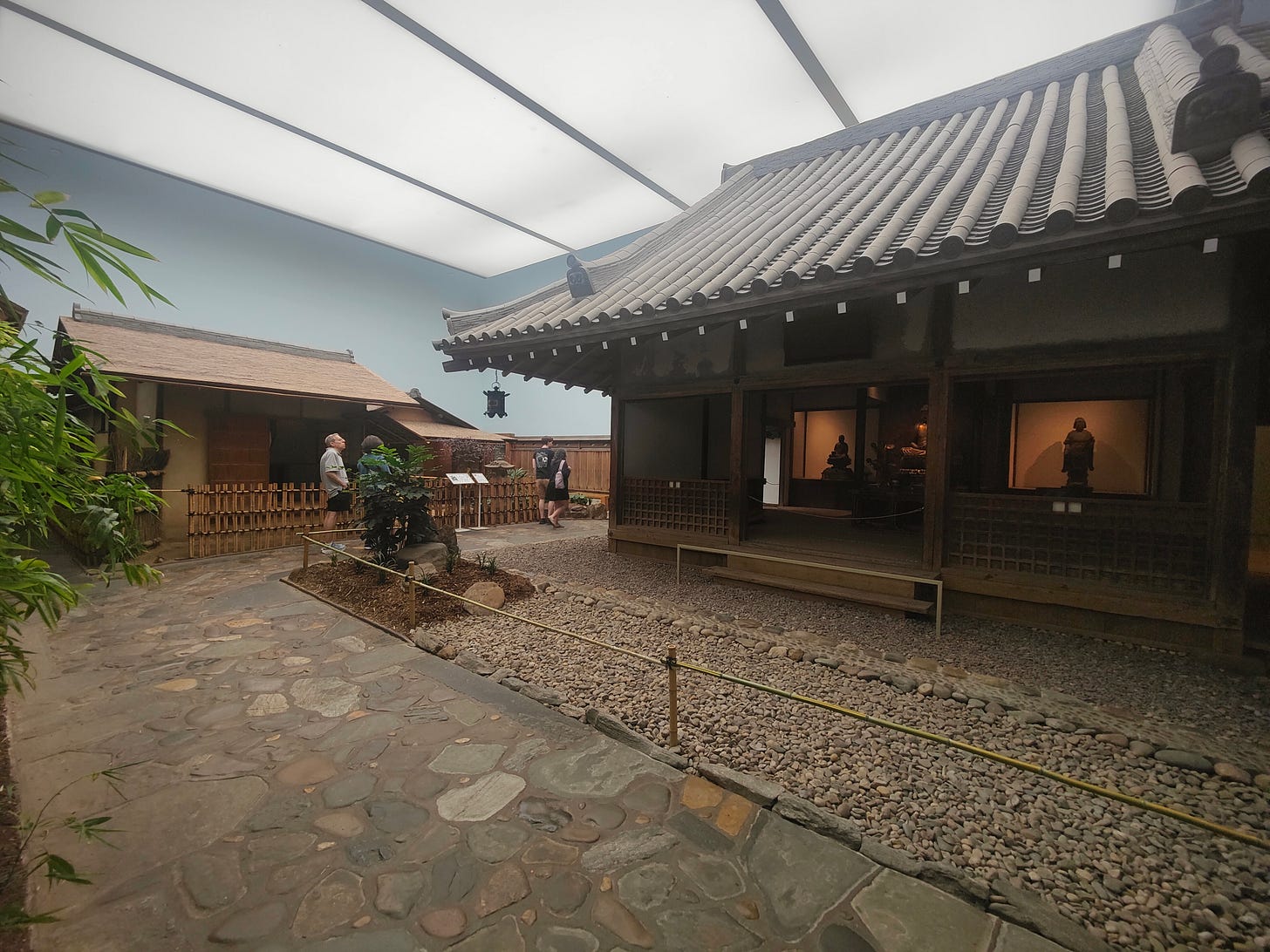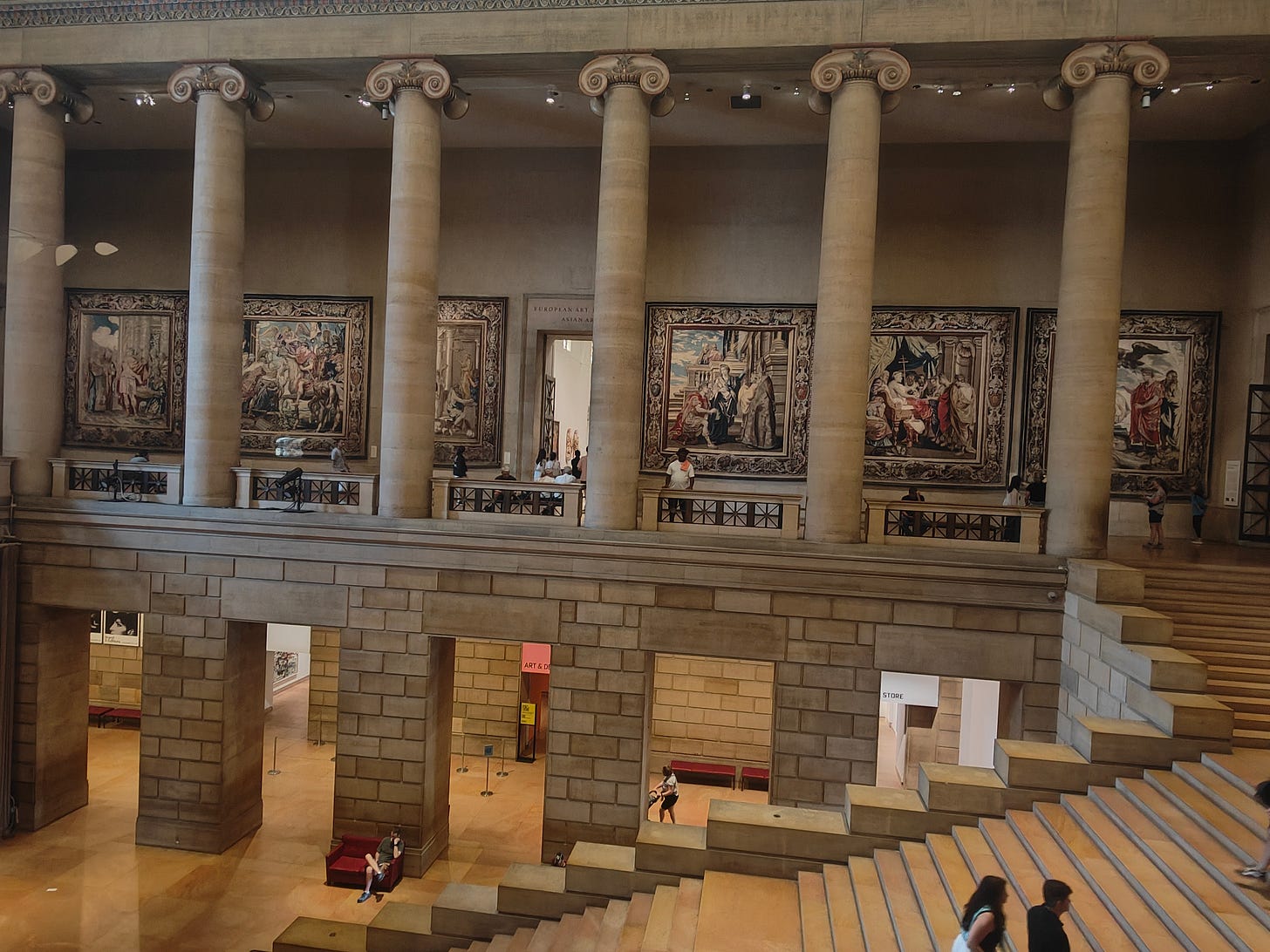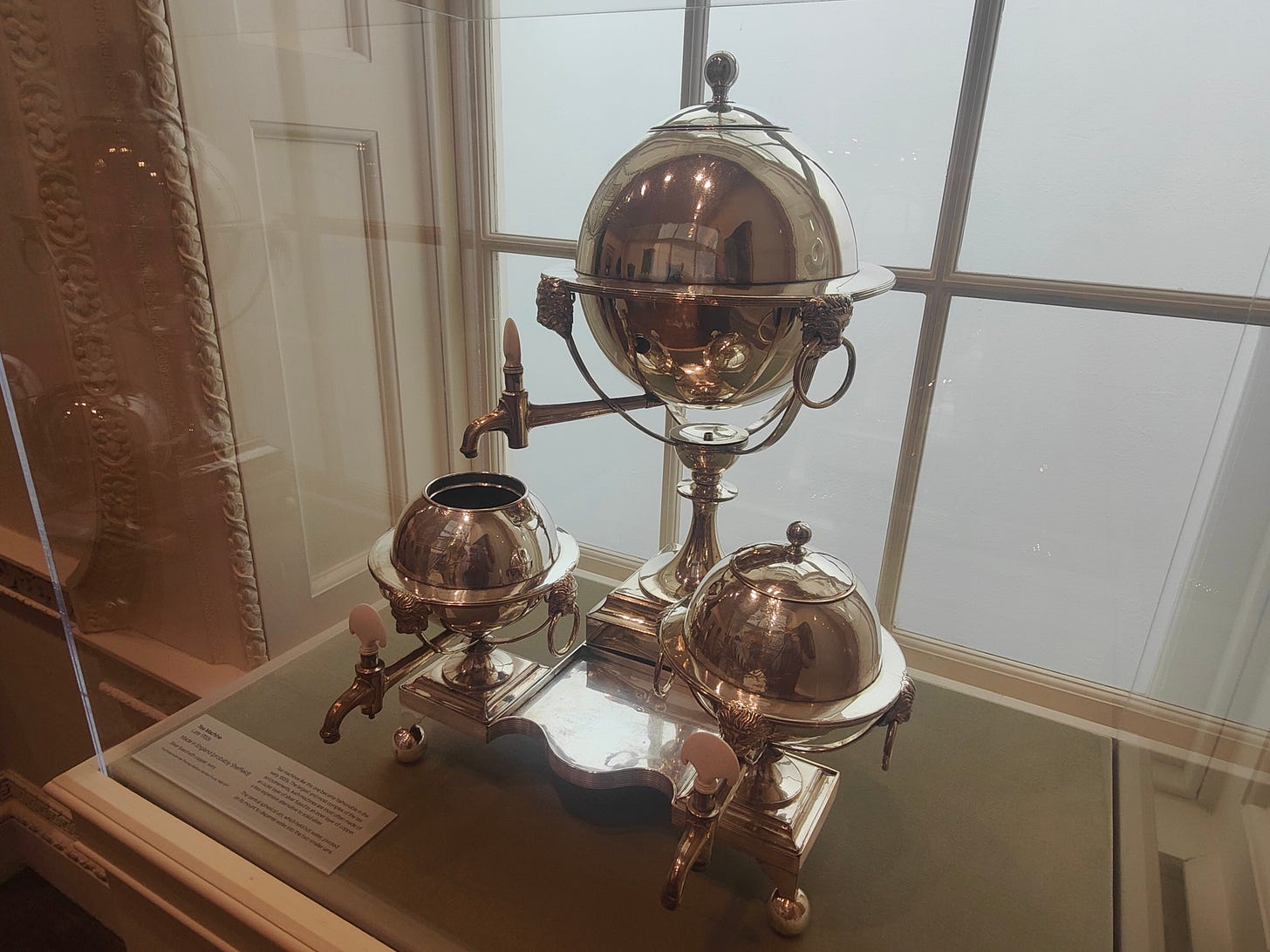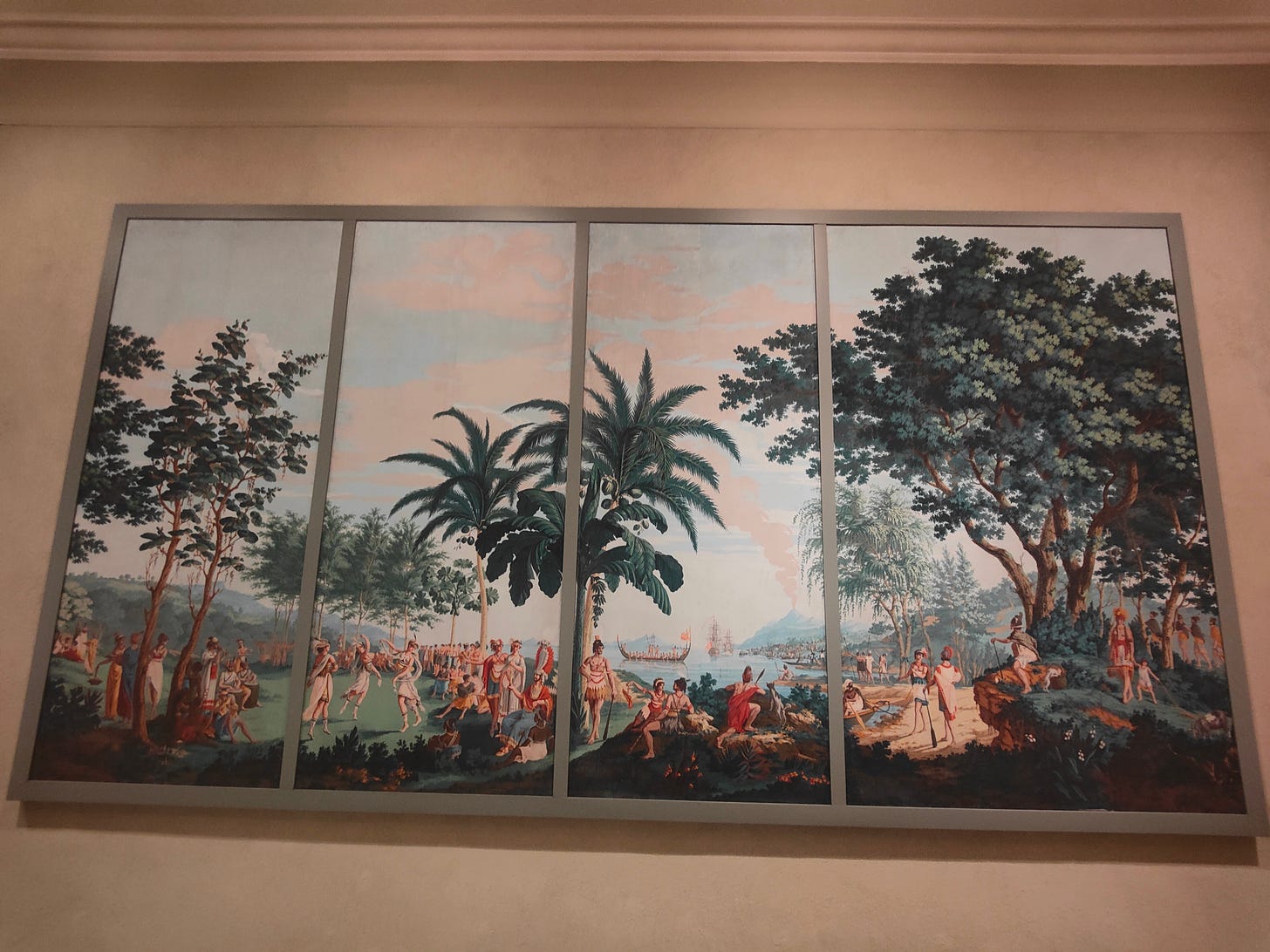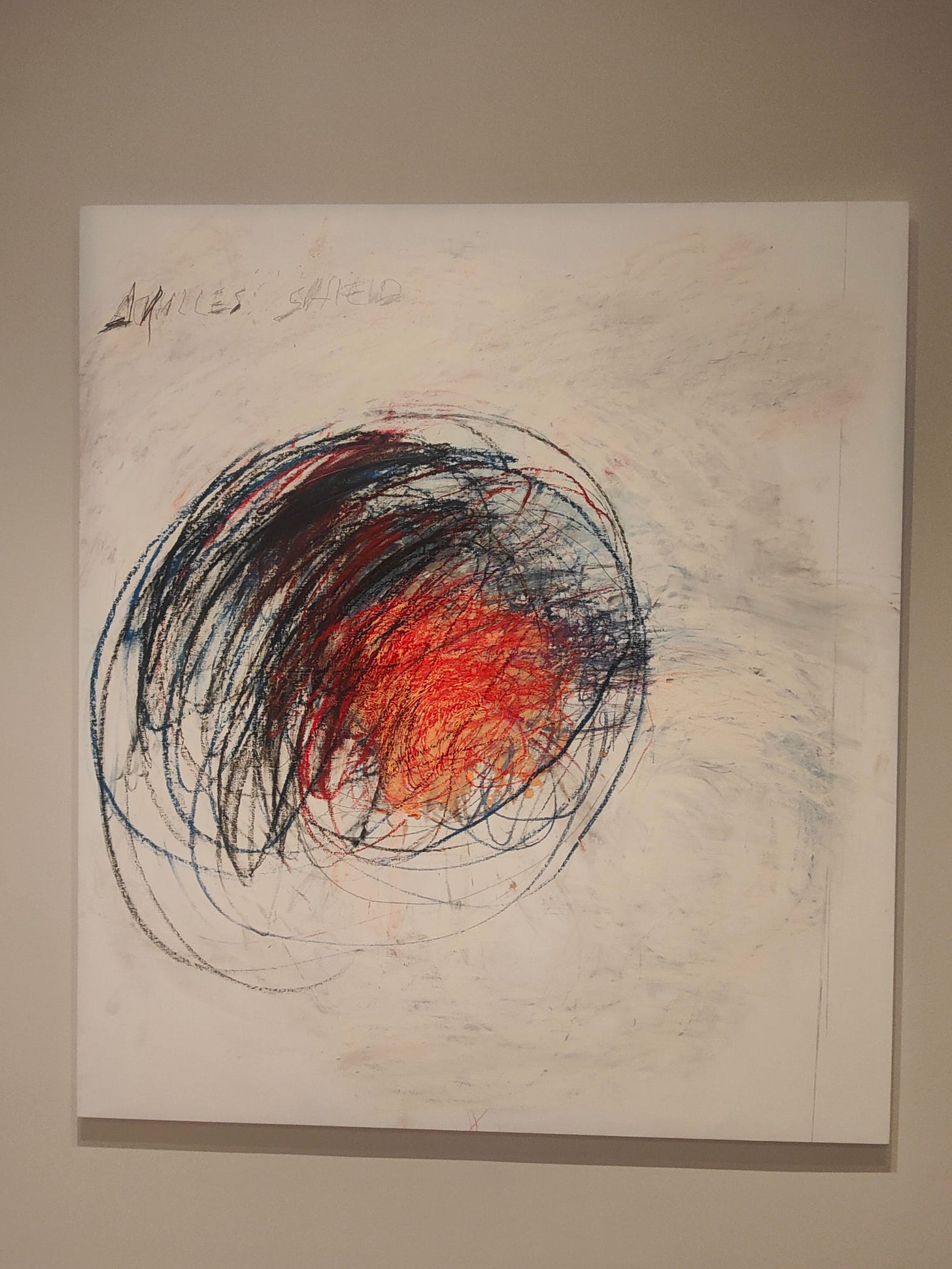Philadelphia has some magnificent buildings - these two are just up Chestnut Street from the hostel - one of the first bank buildings in the nation and the Lafayette Building beside it: now a posh hotel but originally a very swish location of the Board of Directors of the City Trusts (they manage money given to the city by various philanthropists to run almshouses and other charities). Nearby is the Philadelphia Bourse - a commodities exchange set up in 1895 (if only I had gone in - there’s an artisinal food hall inside now!).
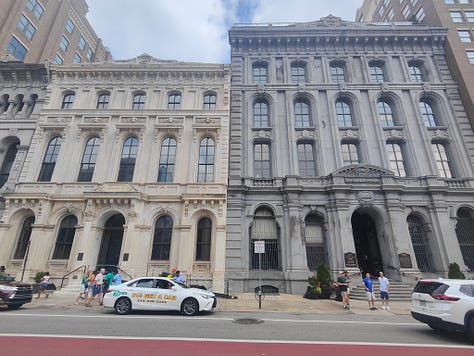
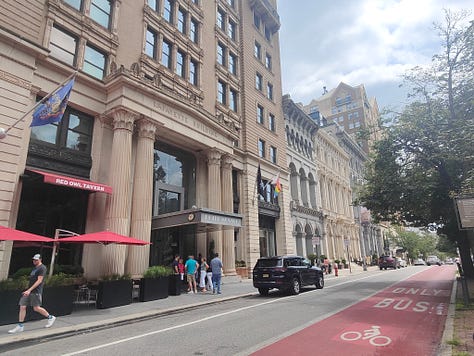
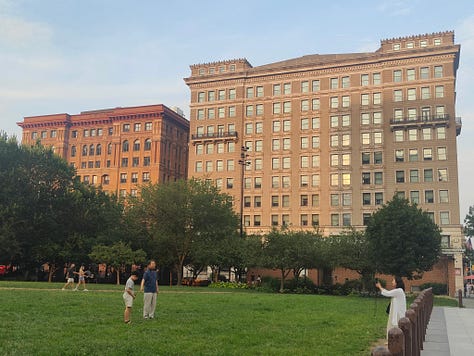
Then there’s this magnificent structure - originally a department store, Lit Brothers, which opened in 1891, eventually occupied the entire block and was closed in 1977.
On the Sunday (July 27) I return to the Philadelphia Art Museum to use the second day given to me. I’m up in the old European art section when the fire alarm goes off: not only do we have to evacuate the building, we can’t stay anywhere near it. It’s not the greatest time to be outside: it’s really hot with no shade, but also raining lightly with a storm threatened (my umbrella is in the museum) and I had just been thinking about visiting the mensroom. Thankfully nothing untoward happened before they let everyone back in.
I make my way slowly down one of the upstairs wings, an overwhelming amount of European then British art. I only have one piece to share - it’s The Abduction of Europa by Noël-Nicolas Coypel. I like it’s vibrancy, but also the fact that it came to Philadelphia with Joseph Bonaparte, who exiled himself here after the fall of his more famous brother.
Things get a bit more peaceful at the end of the wing, with a few mock ups of buildings, like this Chinese Scholar’s Private Retreat - he was probably a high ranking civil official who studied hard to pass exams in the Chinese classics. The panles date from the late 1700’s, no information about the furniture. There’s also a Japanese tea house.
These granite carvings came from an Indian temple near Madurai: they were in a shrine to the Goddess Lakshami and created in the 1500’s but discarded when the temple decided to upgrade.
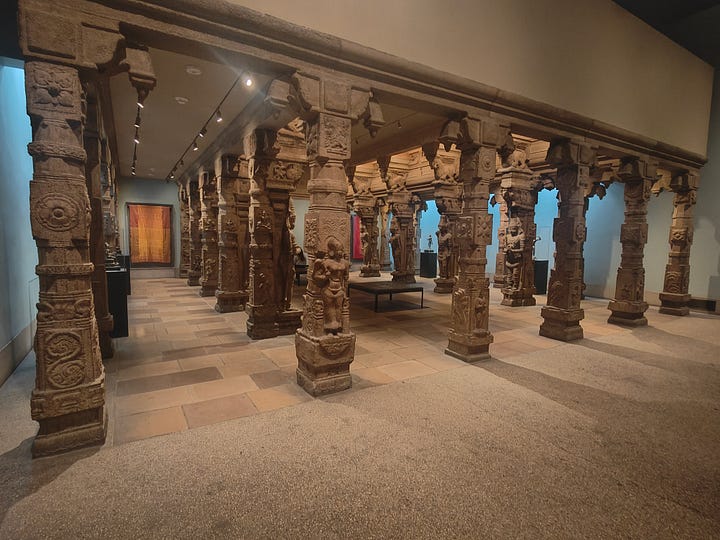

Back at the start of the wing, the walls at the top of the central staircase are decorated with tapestries, mainly by Rubens, to celebrate the life of Constantine, the emperor whose conversion to Christianity made that religion great again back in the 300’s. The tapestries themselves are much more recent, coming from the 1600s. They aren’t normally my thing, but these ones are great - still colourful and full of action.


In the first one, Constantine is making his triumphal entry into Rome, having been crowned sole ruler of the Holy Roman Empire. In the second, he’s a project manager, organising the building of Constantinople (now Istanbul). Moving into the American section, we have some tools of human ingenuity (for a cabinet of curiosities) and a classic New York City townhouse drawing room, followed by a 18th century tea machine, made in Sheffield.
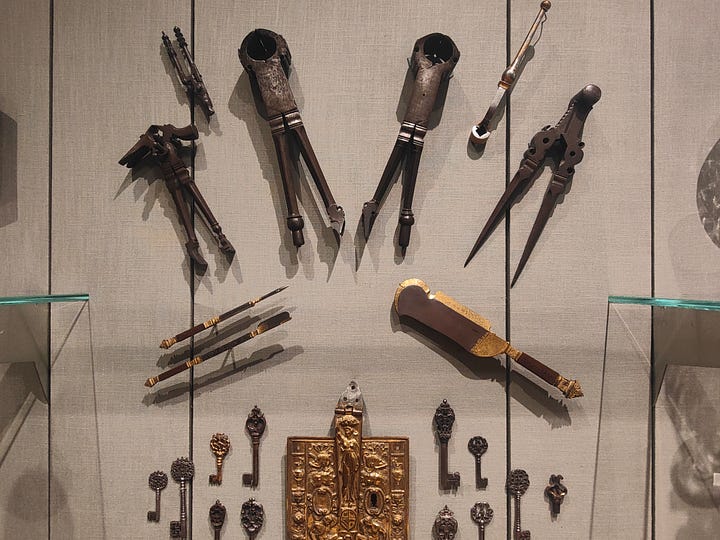
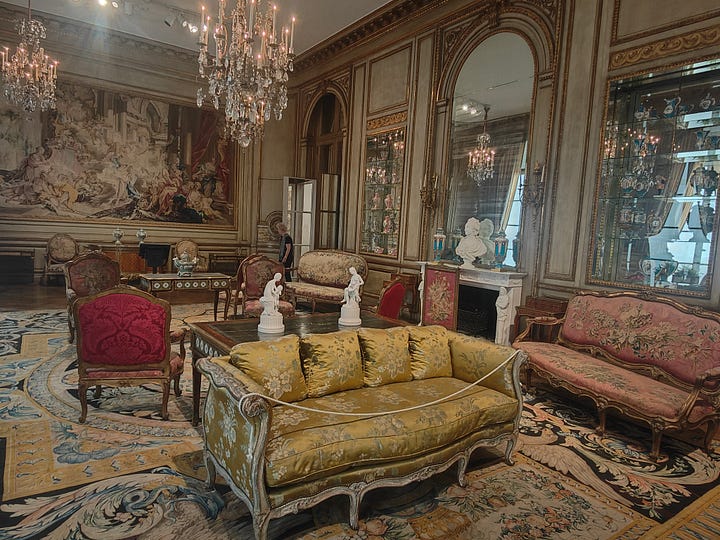
We also have a Pennsylvania German kitchen from around 1752.
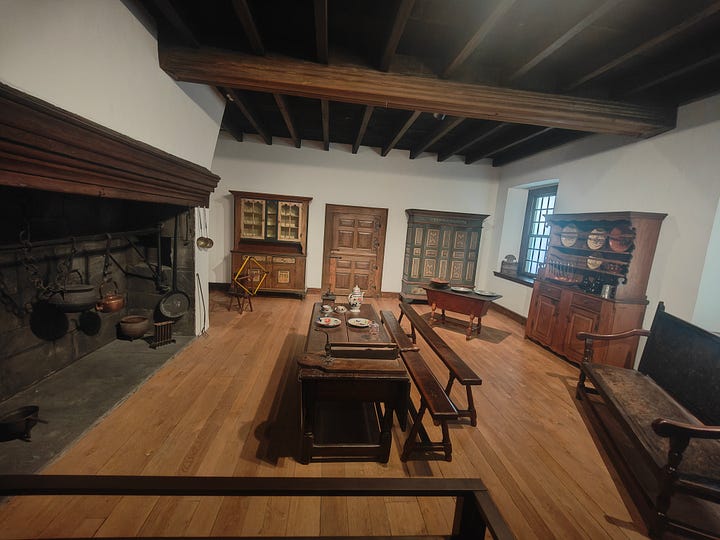
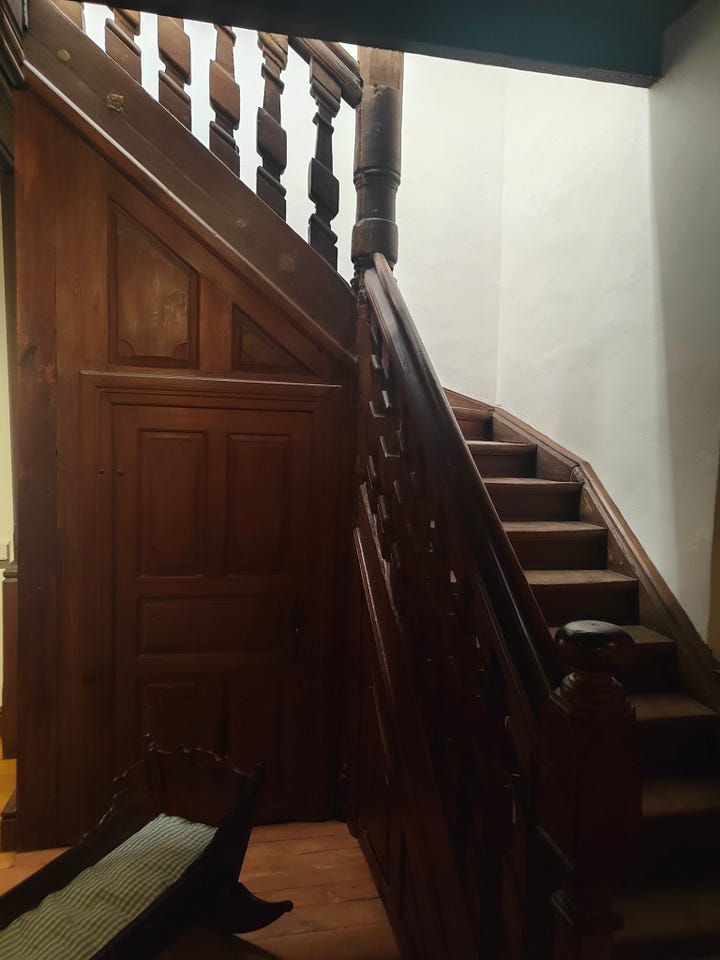
I think it’s fair to say that the Pacific region is not well represented here - I keep my eyes peeled for something local, but there’s nothing from Australia, New Zealand or any of the islands. The closest I find is some French wall paper, made in the early 1800’s from reports of voyages to the South Pacific made in the late 1700’s. It’s called The Native Peoples of the Pacific Ocean - it’s kind of like 19th century AI generated art work.
Alright, nearly done with my visit to the museum - just the modern American art to go. It’s fair to say I don’t like much of it. The “pinnacle” of Cy Twombly’s life long pre-occupation with the Trojen Wall is here, in a collection called 50 Days at Ilium. Just look at the next picture: this is his pinnacle, you can judge for yourself how well he spent his life. There’s more, then some rotting fruit by Zoe Leonard
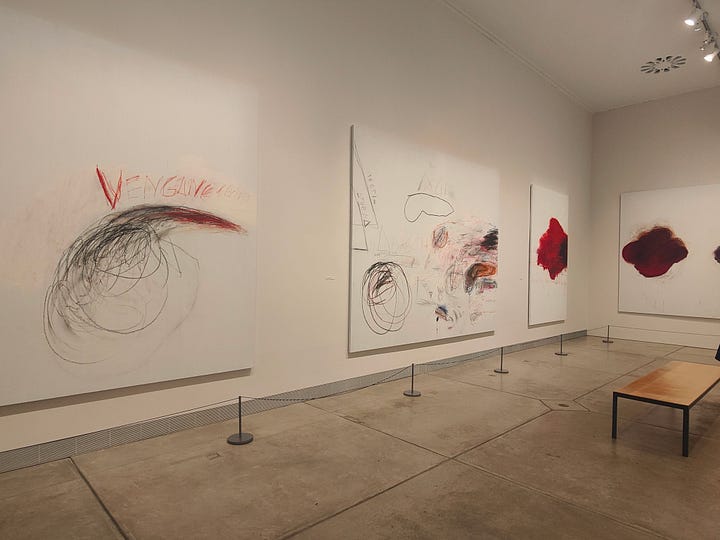

There are two pieces I do like in this section of the museum - Marcel Duchamp’s Bride and Juan Gris’ Man in a Café.
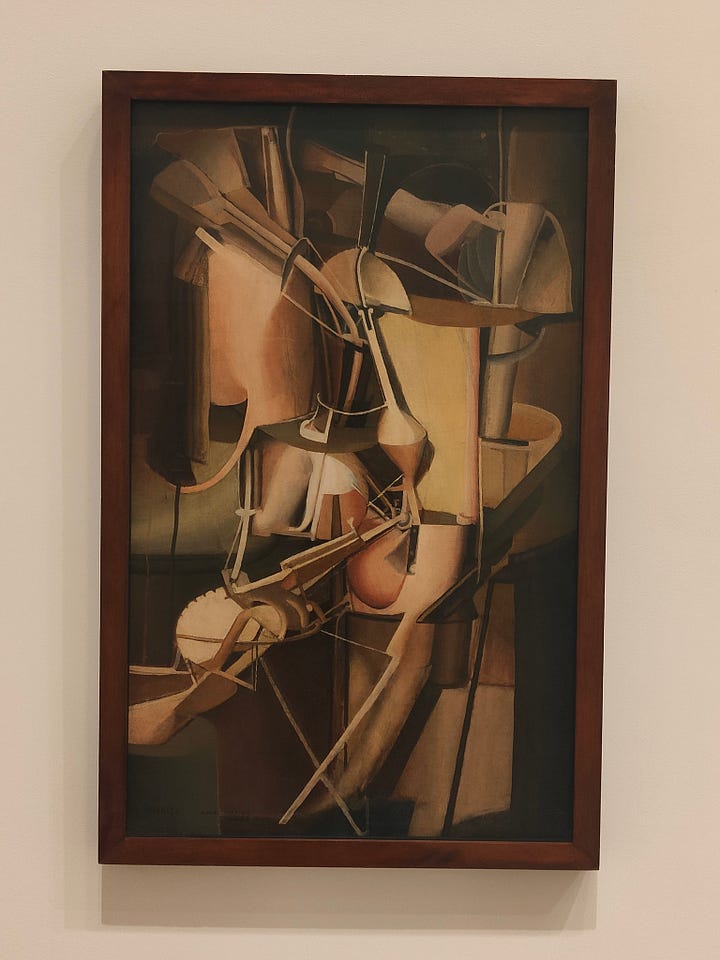

It’s been a long day (I make another visit I’ll talk about in the next post) so I stagger back to the Victory Brewing Company for a quiet beer before I go looking for dinner. On the way, I pass by a couple of statues of Benjamin Franklin - in one, he’s performing his craft as a printer. In the other, Brother George Washington is showing him his Masonic Apron outside the Masonic Tmple, which stands beside the City Hall.

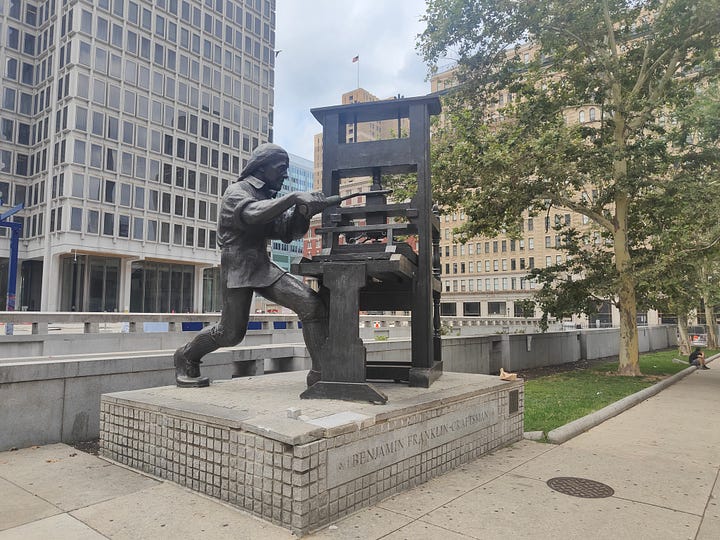
I actually caught the bus to the Art Museum - on the way there, I spotted a suitable place for dinner, but never manage to get there. That’s because I spot Banana Leaf Malaysian Cuisine, but it’s a bit dead, so I look around the corner and find Penang Malaysian Cuisine. Their chicken curry isn’t exactly according to Hoyles but fairly tasty.
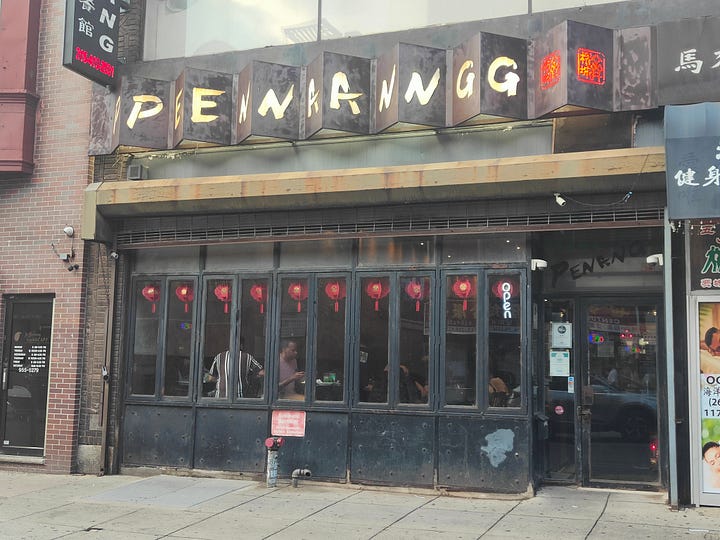
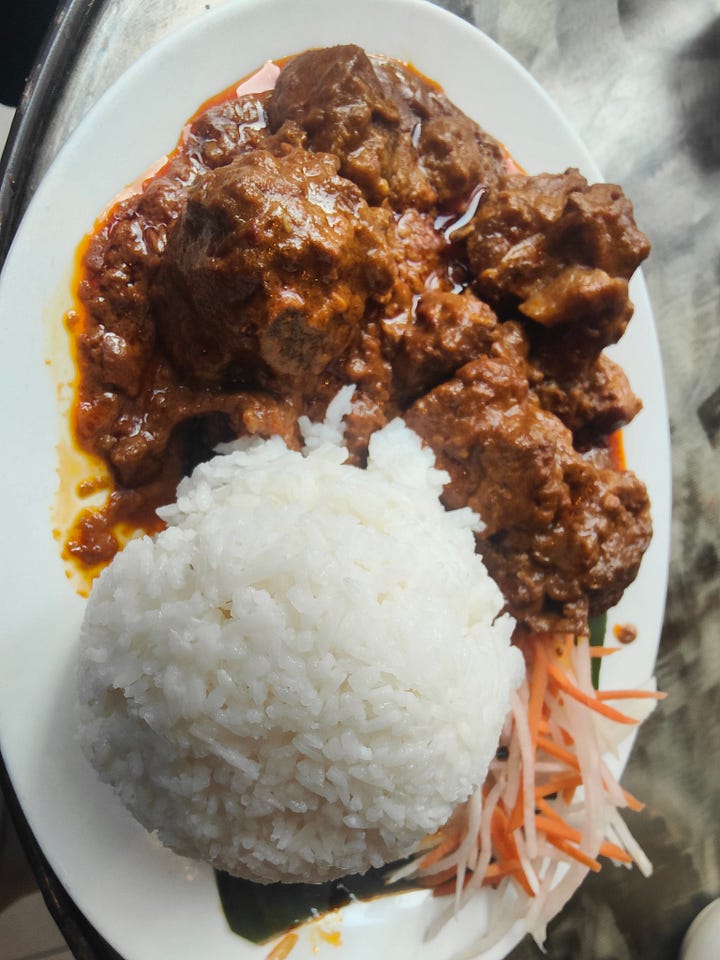
Cheers!




